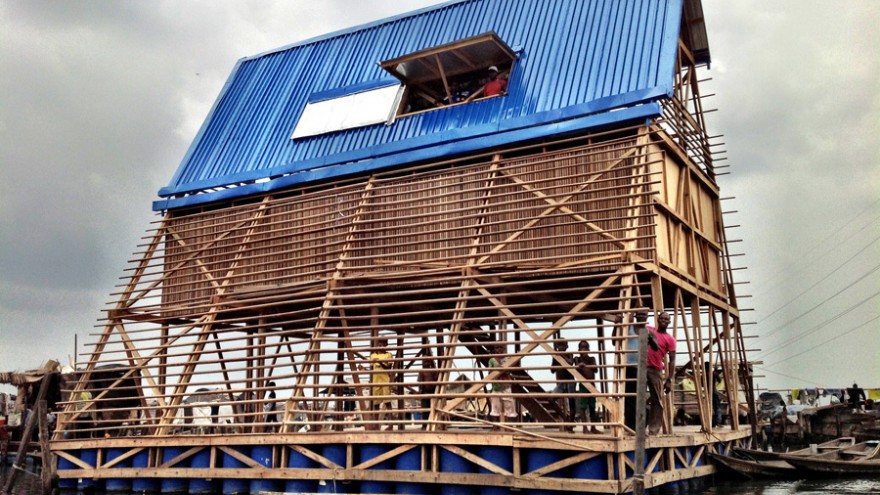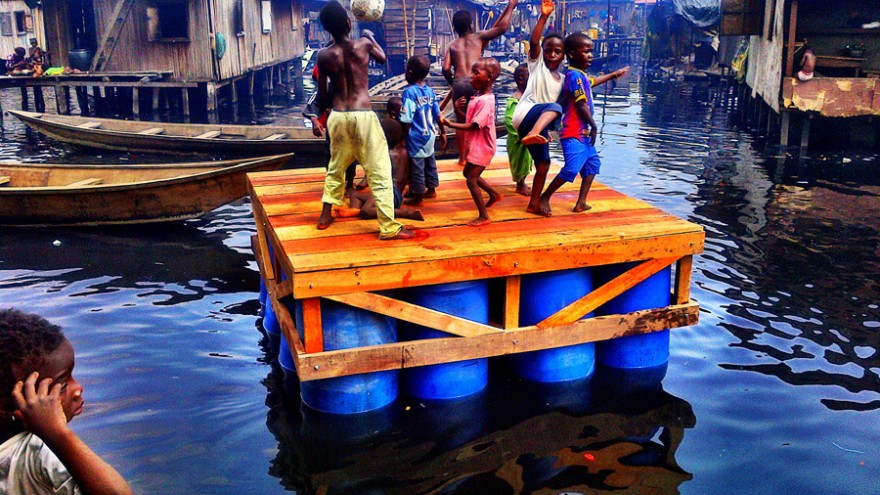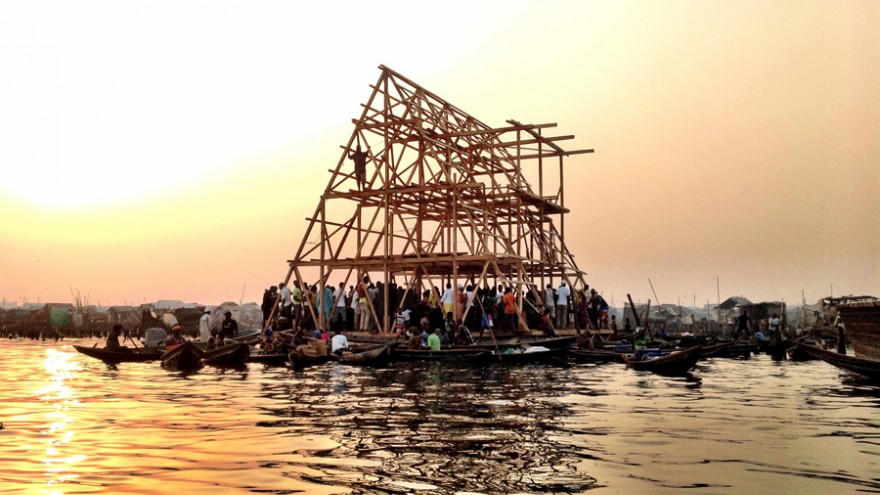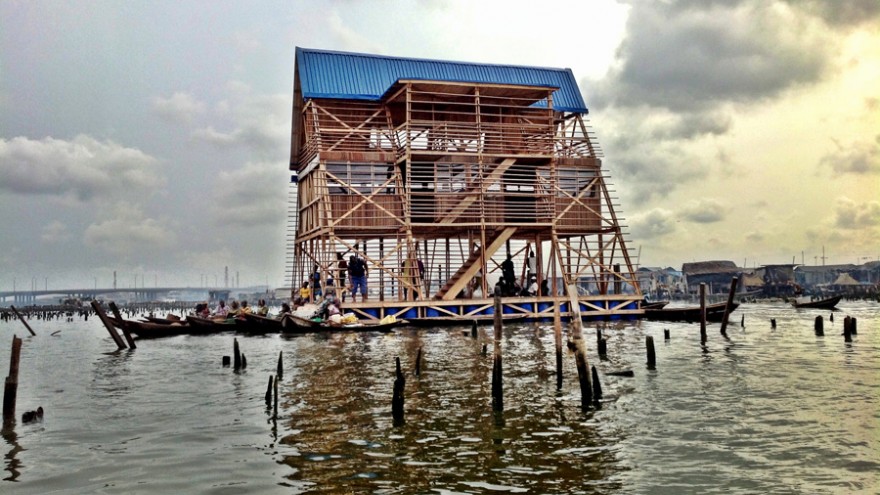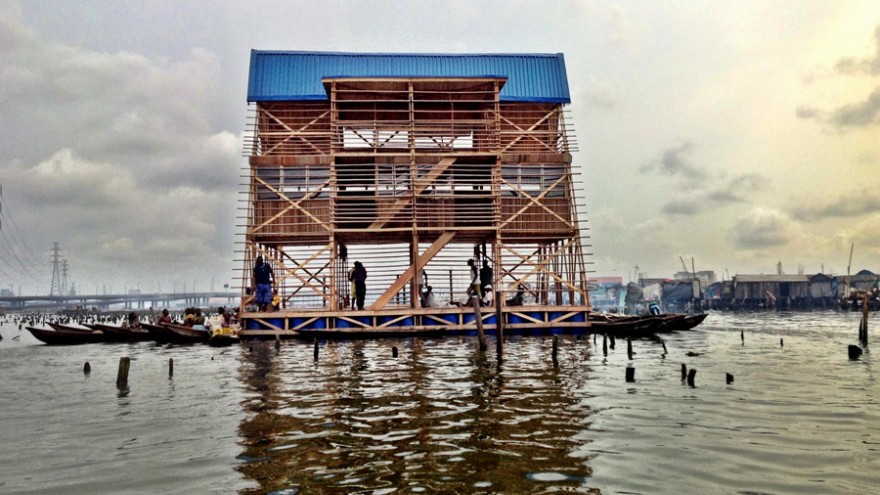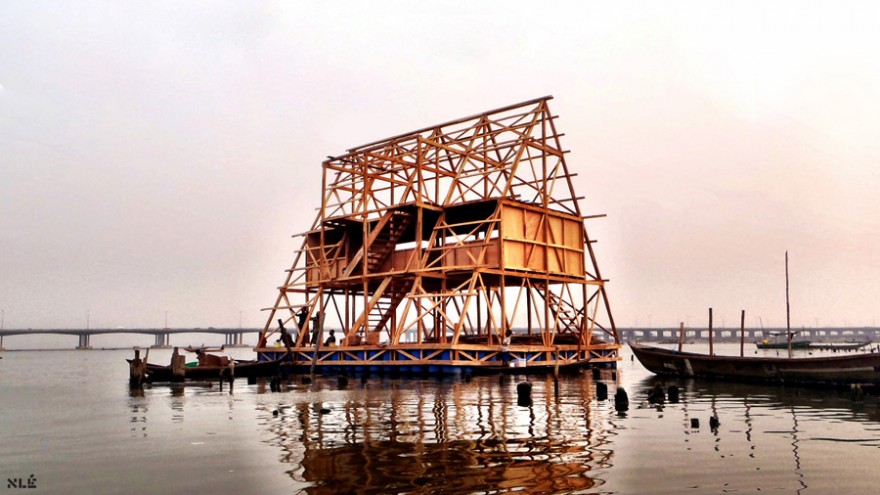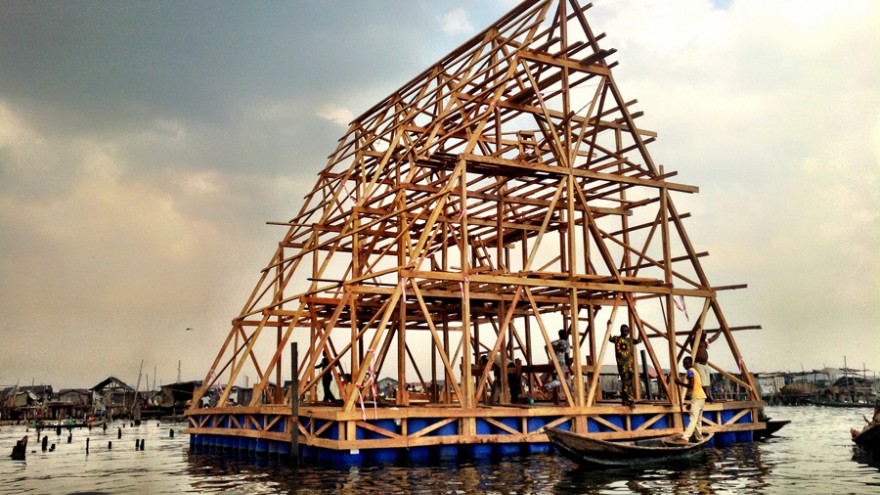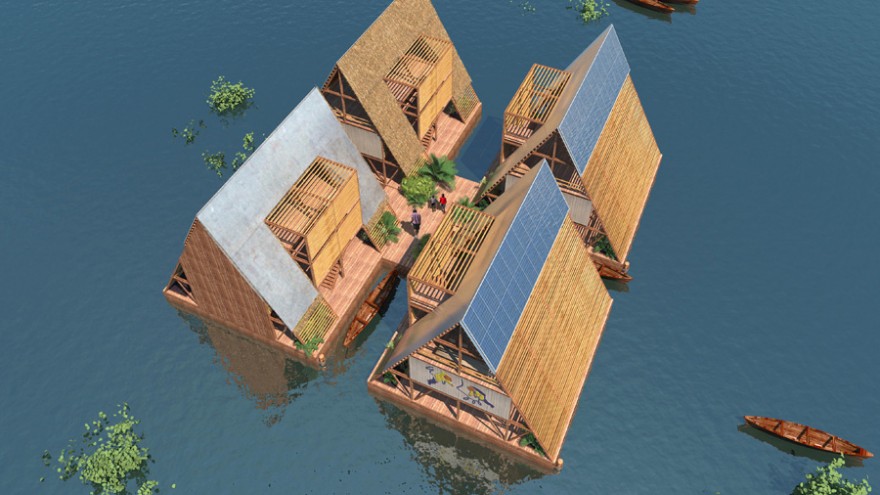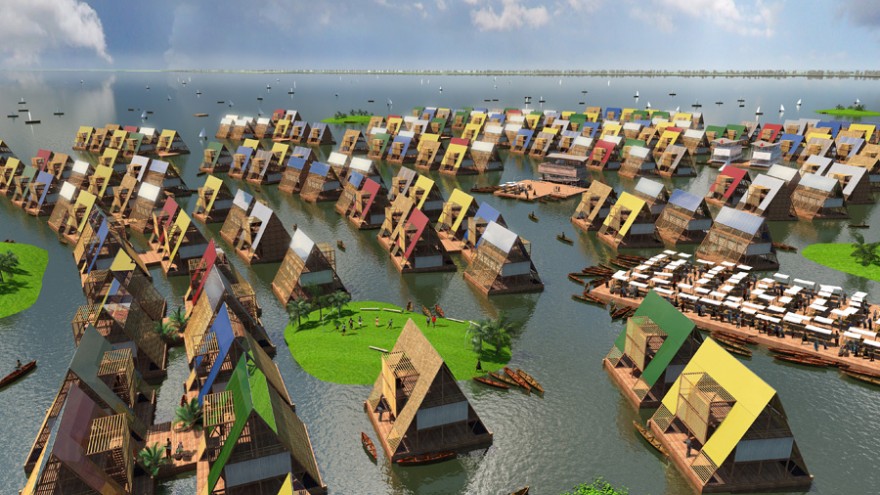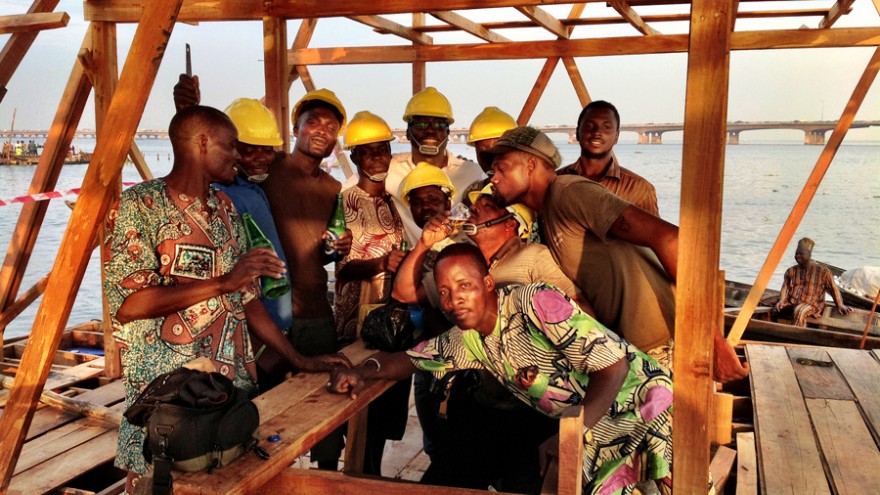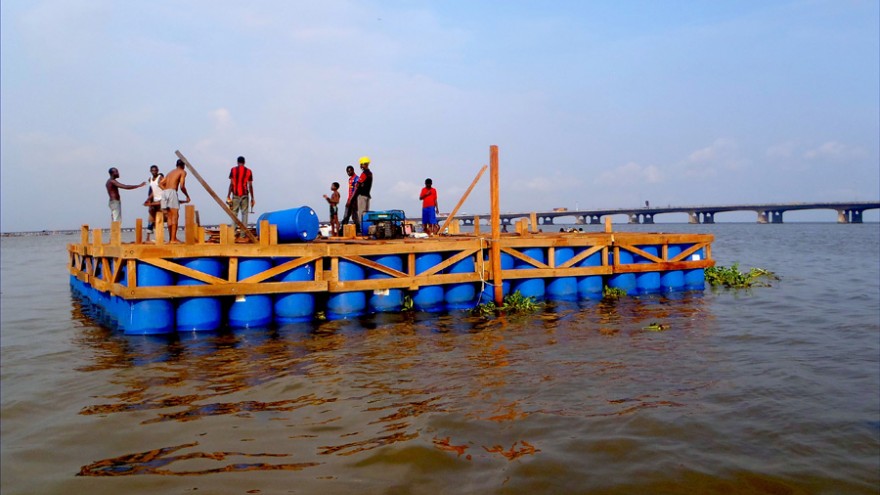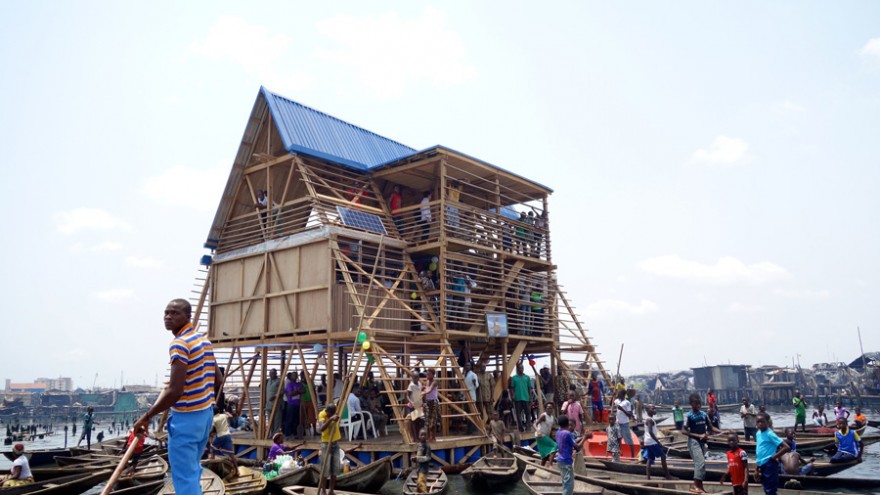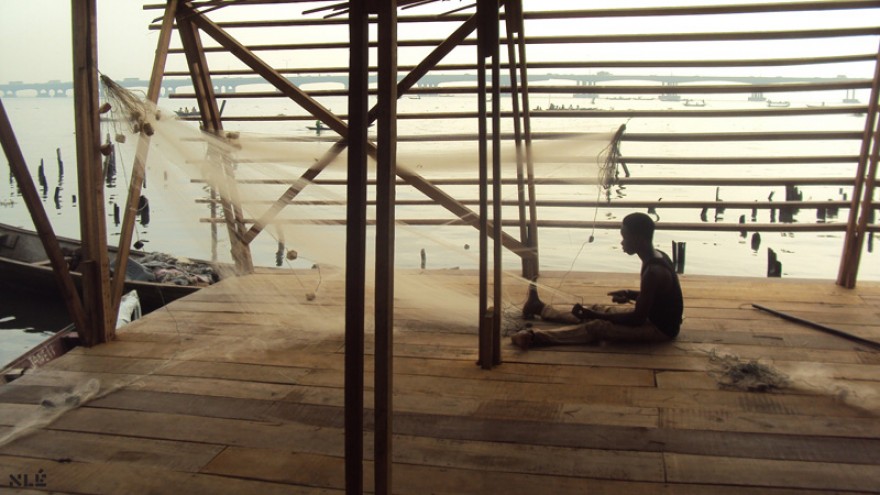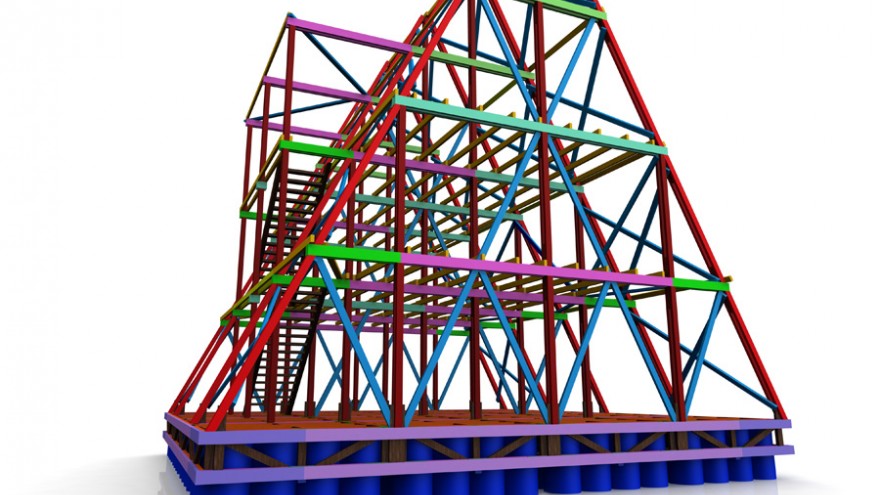Rapid urbanisation and climate change are two key challenges facing the modern metropolis. The community of Makoko in Lagos, Nigeria, is overly familiar with both issues. Makoko is an aquatic community of some 100 000 people who live on housing units built on stilts in the water. There’s no land, no roads and no formal infrastructure… an informal Venice of Africa, if you will.
While Makoko represents the worst results of climate change and urbanisation, it also inspired innovative solutions and alternatives.
One such solution is the Makoko Floating School by architects Kunlé Adeyemi of NLÉ Design Architecture and Urbanism practice in Amsterdam. The Makoko Floating School is a prototype floating structure – a moveable building or watercraft – that adapts to the tidal changes and varying water levels, making it less susceptible to flooding and storm surges. Furthermore, the structure is designed to use renewable energy, to recycle organic waste and to harvest rainwater.
NLÉ’s structure, which was initiated in May 2011, will serve as a school, though the design allows for it to be easily scaled and adapted for other purposes like a community hub, health clinic, market and public space.
The basic structure of the prototype is a floating triangular frame that is both flexible and customisable, in addition to being safe and economical. Empty, recycled plastic barrels – which are available in abundance in Lagos – was used for the structure’s flotation system consisting of 16 wooden modules with 16 barrels in each.
These modules were built and assembled on the water, creating a 100-square-metre platform that gives the structure the necessary buoyancy. The next step involved the construction of the 220-metre A-frame using locally-sourced, eco-friendly bamboo and wood from a local sawmill. Measuring in at 10-metres-high with a 10-metre by 10-metre base, this shape is ideal for a floating object on water because of its low centre of gravity. Even in heavy winds the object will have stability and balance.
The prototype has three levels. The first is an open-plan area, which could also work as a community space after school hours. The second level is an enclosed space that could function as either two or four classrooms holding between 60 and 100 pupils. The third level is a semi-enclosed workspace that is connected to the other two levels by a staircase on the side.
Makoko Floating School has an electrical system, which is powered by solar panels on the roof. A compost/urine diversion toilet, similar to those used in local practices, is incorporated into the building, with compost being recycled for vegetation and planting on the structure.
It is envisioned that the building will be used as a school, and as a communal use facility by adults after school hours.
The project is a collaboration between the community and stakeholders. Stakeholders include Makoko/Iwaya Waterfront Community, NLÉ, the United Nations Development Programme/Federal Ministry of Environment Africa Adaption Programme, Heinrich Boell Foundation and NLÉ’s technical collaborators.
A completion date for the project has not yet been finalised. Makoko Floating School is a prototype structure for NLÉ’s proposed Lagos Water Communities Project and its African Water Cities research project.

